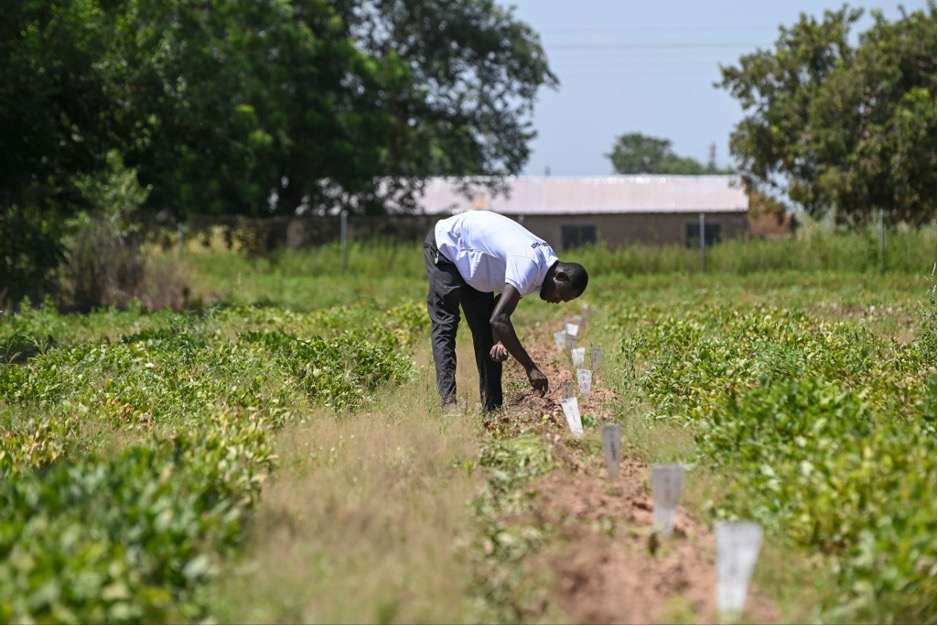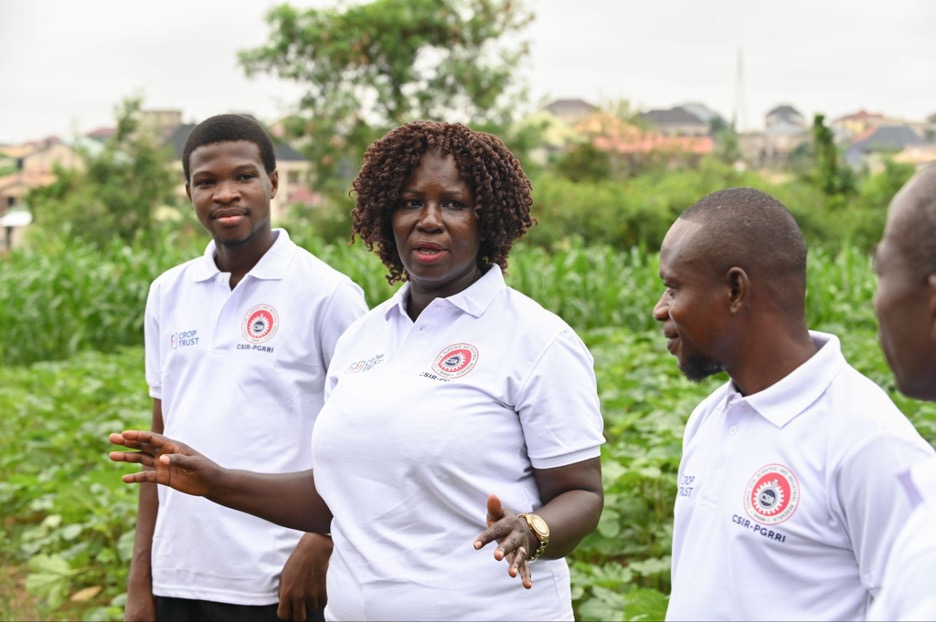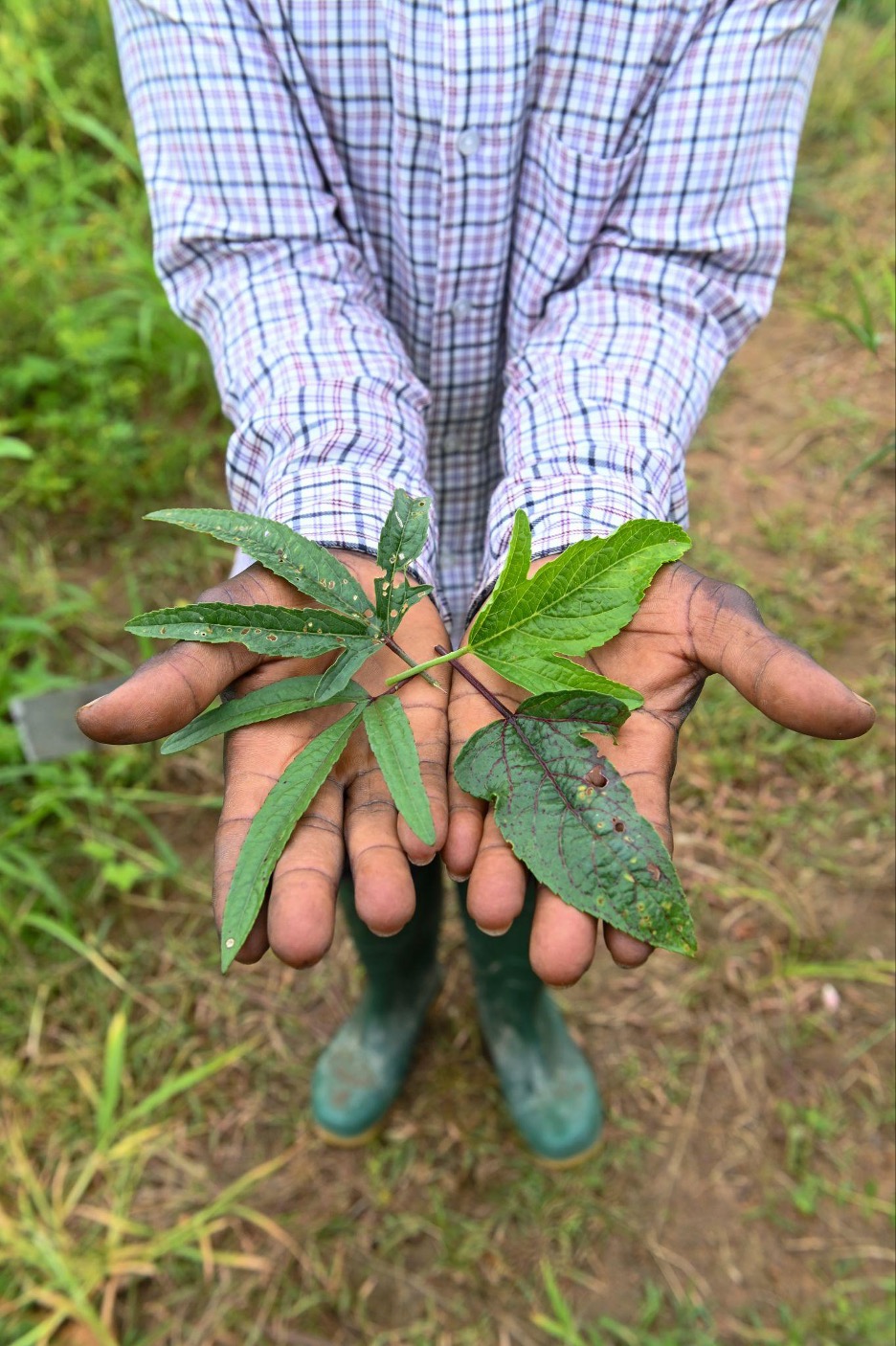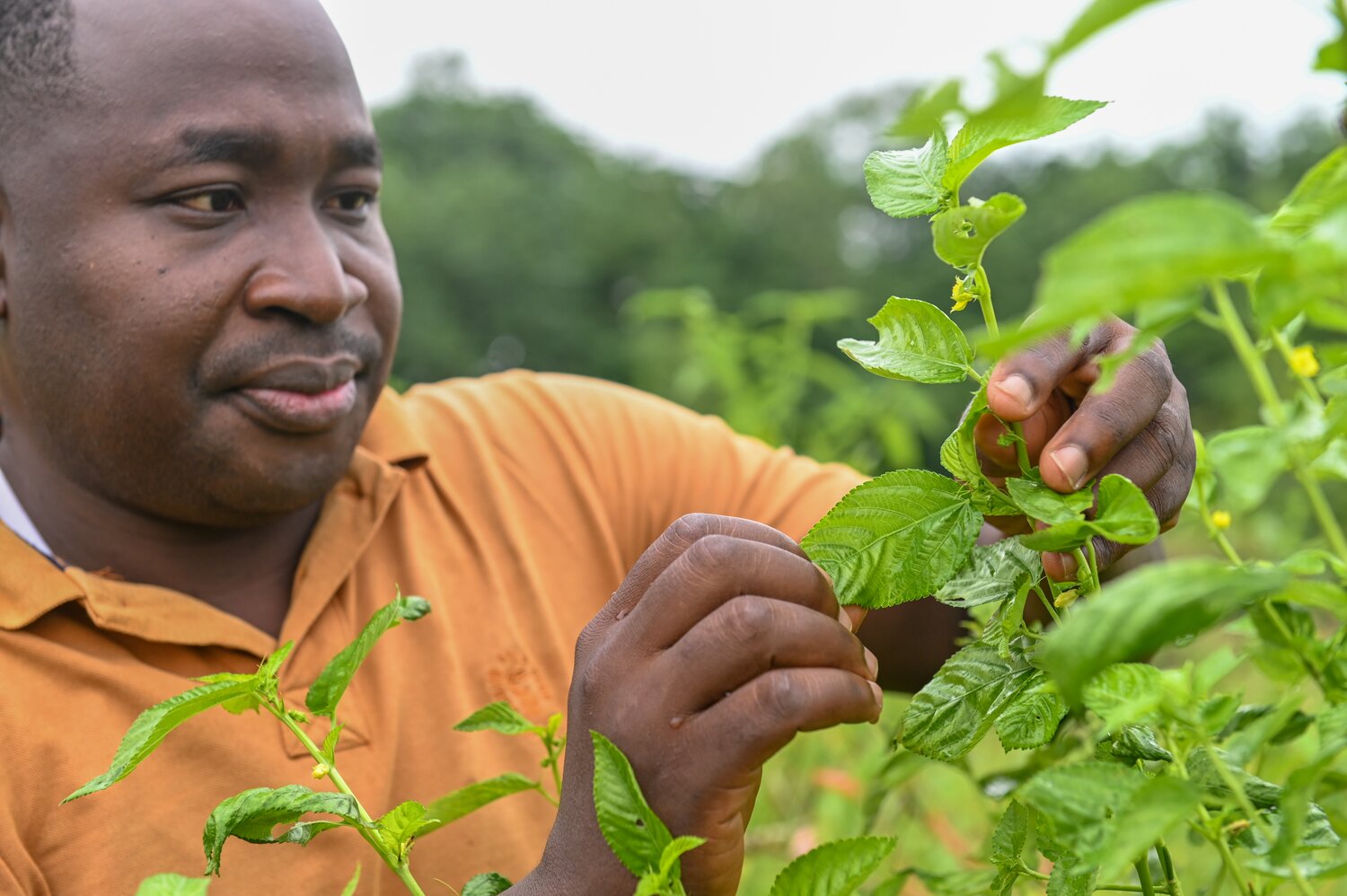Taking Diversity out of the Genebank and into Farmers’ Fields in Ghana

(Photo: Neil Palmer/Crop Trust)
16 January 2024
On the way to Manga, in Ghana’s Upper East Region, over the border the hills of southern Burkina Faso shimmer in the middle distance. Beyond them is the Sahel. For long periods of the year, the area is hot and dry.
This is the homeland of Bambara groundnut, a drought-tolerant legume. Its pea-like seeds have a nutty flavor and contain around 20% protein. They can be eaten fresh when immature—the seeds get harder as the plant grows—or boiled, grilled, and fried to satisfy a variety of tastes. Although Bambara groundnut has traditionally been cultivated and consumed at home, its role is slowly evolving to include serving as a cash crop for covering expenses such as school fees and hospital bills.
However, despite its commendable attributes, Bambara groundnut has hit a snag in the region. Some farmers have opted for soybean and maize instead, because of a better-established seed system—the network facilitating the exchange of seeds among producers, buyers, and sellers each growing season. Local markets abound with improved maize and soybean seeds, consistently offering uniform, high-quality crops.
No such system exists for Bambara groundnut. Farmers tend to rely on the seeds they have stored from the previous season, swapping or trading them with others. Often, they’re not sure what they’re getting; a bag of seed might contain one or multiple landraces, and the quality can be hit-or-miss.
Patrick Attamah from the Savannah Agricultural Research Institute (SARI) notes that despite conserving around 90 accessions in Ghana's national genebank, only three or four landraces of Bambara groundnut are cultivated in the area. That shouldn’t be the case. Genebanks, repositories of diversity collected in farmers' fields or the wild, house a wealth of unique traits. But farmers are missing out on this potential.
The Seeds For Resilience project aims to address this gap by distributing Bambara groundnut diversity from the genebank to different interested users, ranging from farmers to researchers. Collaborating closely with the Plant Genetic Resources Research Institute (PGRRI), which houses the national genebank, Patrick and his team have established a plot at the SARI research station in Manga, displaying all 90 Bambara groundnut accessions. Attributes such as leaf shape, yield, and seed color will be meticulously noted to identify varieties best suited to the region and those meriting further research.

Genebank staff at the SARI research station in Manga monitoring the growth of different Bambara groundnut accessions. October 2023. (Photo: Neil Palmer/Crop Trust)
Recognizing the significance of farmers' insights, the project has also set up Bambara groundnut evaluation plots in nearby communities like Bugri Bulpielis and Naransaag, inviting farmers to observe and select their preferred varieties. The material they choose will undergo prioritized seed multiplication by SARI, with the seeds eventually distributed free of charge to farmers. With the seed type and quality assured, the project aspires to catalyze the establishment of a Bambara groundnut seed system in the region.

(Photo: Neil Palmer/Crop Trust)
In addition to Bambara groundnut, Ghana’s national genebank, situated at PGRRI in Bunso, holds critical collections of crops vital for food security, including rice, cowpea, maize, eggplant, and cassava. Among these is a special group of plants known as indigenous leafy vegetables, including corchorus (jute mallow), roselle (hibiscus), and amaranthus (African spinach).

(Photo: Neil Palmer / Crop Trust)
Indigenous leafy vegetables are great at promoting healthy diets, generating income, and sustaining traditional food systems in Ghana. Typically consumed for their leaves, rich in vitamins and micronutrients, these vegetables add color and flavor to local soups and stews. Sometimes, the roots and seeds are used to make biscuits or porridges. Despite their potential, however, farmers encounter challenges obtaining good quality seeds, and the diversity of landraces in circulation remains a fraction of that conserved in the genebank.

(Photo: Neil Palmer/Crop Trust)
To address this, Seeds for Resilience has established evaluation plots for 20 accessions of each of the three key species in Ghana's Ashanti and Northern regions. These plots provide local farmers, traders, and processors with firsthand experience of the available diversity, allowing them to share preferences.
Patricia Acheampong, a researcher with the Kwadso Indigenous Leafy Vegetable Germplasm User Group near Kumasi, Ashanti Region, noted that some farmers expressed interest in types that mature at different times, to provide protection against extreme weather impacts. Traders, on the other hand, indicated preferences for different leaf colors and shapes that might enable farmers to charge a premium. With the preferences identified, efforts are now underway to multiply the seed for farmers.

(Photo: Neil Palmer / Crop Trust)
Confronting entrenched issues related to land tenure, access to credit, and water availability for irrigation is essential for maximizing opportunities for both Bambara groundnut and leafy vegetables in Ghana. However, Joseph Bandanaa, a PGRRI research scientist and member of the Seeds for Resilience team, believes that establishing a functioning seed system is just as necessary to significantly improve farmers' fortunes.

“I look forward to seeing farmers multiplying their seeds based on what they have selected from the genebank collections, and then sharing with the user groups so that together they can have seeds that build their climate resilience, help them to get all the food and nutrition they need, and build a sustainable livelihood,” he says. “That would be one of the biggest achievements of the genebank.”
SARI and PGRRI are part of Ghana’s Council for Scientific and Industrial Research (CSIR).
Seeds for Resilience is a five-year project to support the national genebanks of Ethiopia, Ghana, Kenya, Nigeria and Zambia funded by the German government through the German development bank, KfW.
Categories: Seeds for Resilience, Bambara Groundnut, Cassava, Cowpea, Eggplant, Maize, Rice




